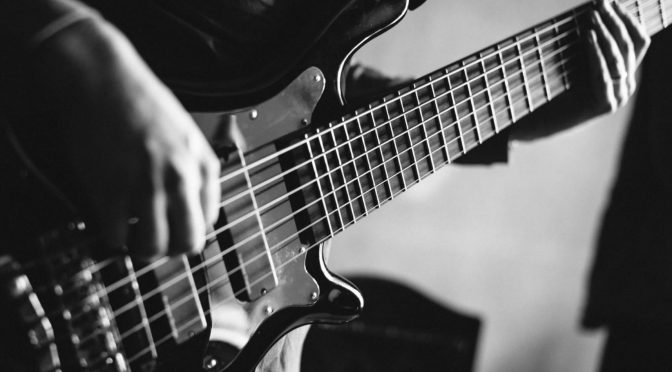How to Practice Playing on Difficult Jazz Chord Progressions – Bass Practice Diary – 23rd July 2019
Last week I was practicing Herbie Hancock’s classic composition Dolphin Dance. Which features a unique and quite complicated set of chord changes to improvise on. So, this week I wanted to share my approach to practising playing on tricky jazz chord progressions like this one.
A good starting point for practicing anything difficult is always to start slowly and practice in short sections. And that’s particularly true in this case. Dolphin Dance has quite a long form for a jazz standard. Anything over 32 Bars is unusual. But even a 32 bar standard would usually have repeated sections. Dolphin Dance has hardly any repetition within the harmonic structure, so it does feel like a lot to learn.
How I Use Backing Tracks
When I break a standard down into sections, I will usually practice in 4-8 bar sections. Generally I will create my own backing tracks, either using a loop pedal or by recording piano chords in to Protools. These backing tracks can be very basic. They only need to be good enough to keep the form and the structure. The advantage of creating my own backing tracks is that I can set the exact harmony and tempo that I want to practice. There may be apps that now exist that can do this for you, but I will always prefer to do it myself.
The problem with most commercially available backing tracks is that they usually only feature the entire form played at one tempo. Which makes it harder to practice slowly and in short sections. I do use commercial backing tracks and backing tracks from the internet. But with a tricky tune like Dolphin Dance, I’ll only uses them when I feel ready to take on the entire form after practising with my own backing tracks first.
Write Out Examples
When I’m practising in short sections, I will particularly focus on the most tricky sections of the harmony. In the video I’ve picked out one of the more unusual harmonic sections of Dolphin Dance. The section begins with an Eb7 chord before immediately changing key into G major with a II – V. Then it goes to a Bm7 chord, which could be chord III in G major but that’s followed by an E7 chord so that implies a II – V in A major. But the E7 is followed by Dm7 which doesn’t belong in either G or A major and that’s followed by C#m7 which is chord II in B major.
So, the harmony is jumping around which will keep you on your toes when you’re improvising. I think if you’re going to learn how to improvise melodically on a progression like this, then it really helps to write some ideas down. I usually do this by trying to come up with a melody or rhythmic phrase that I can hear in my head, and then trying to see if I can make that melody fit through the harmony. This might involve making chromatic adjustments to help the phrase fit in with the harmony.
In the video I featured three examples, and here they are.


